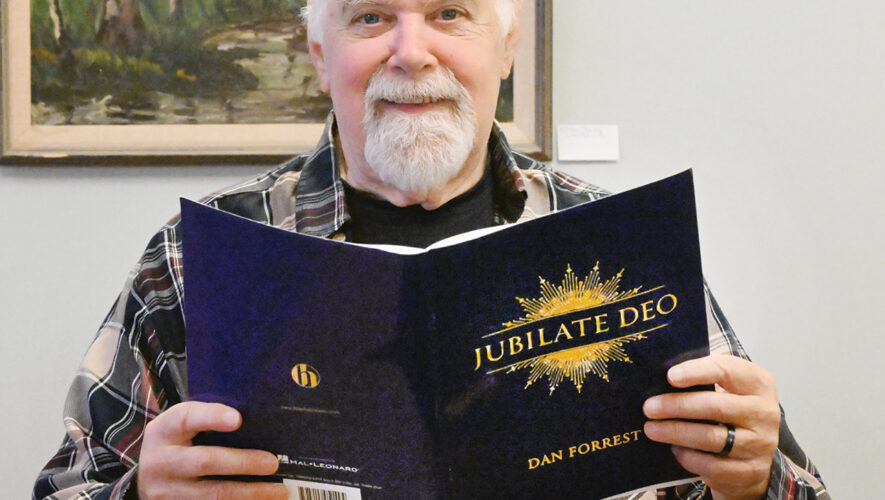Racism a catalyst; partisanship, fear, hatred have become more extreme
By RACHEL SHUBIN/Special to the Sentinel
Politics are not the same as they were four years ago. The United States is anything but united. A massive rift has divided the country in a partisan manner, worsened by the global COVID-19 pandemic. The Democrat versus Republican mentality is trending toward a political crisis.
The Pew Research Center defines political polarization as “the vast and growing gap between liberals and conservatives, Republicans and Democrats.” It calls political polarization a defining feature of American politics.
Political polarization is not a new issue, but partisan distinction, fear, and hatred have become more extreme, per Stockton University political science professor James Mac Avery.
Racism as a catalyst
“I think there is a tendency to think [polarization] is a new issue,” Mac Avery said. “If you look at the rhetoric of political campaigns and public policy in the ‘80s and ‘90s, it was very much about race.”
The election of President Barack Obama became a catalyst for the uptick in political polarization. Obama’s 2008 campaign featured a platform of “change,” raising hopes that race relations would improve.
During the Obama administration, many partisan issues divided the country sharply. These national problems included the Affordable Care Act, gun control, immigration, climate change, and several high-profile deaths of Black Americans. These issues continue in this year’s election.
“Race has been salient since the beginning,” Mac Avery said. “It seems to be a fundamental difference in political values. You have people on the right who are fearful of those who are different from them. Then, people on the left are more accepting and have less fixed views; for example, [of] what it means to be an American.”
The Tea Party movement, named for the Boston Tea Party in 1773, calls for a reduction in government spending, an economy with no government oversight, and opposing universal health care. This movement began in 2009, a month after Obama’s inauguration.
“In the book ‘Post-Racial or Most-Racial’ by Michael Tesler, he makes the argument that the election of Obama was a catalyst in creating this division,” Mac Avery said. “We saw shortly after that election, the Tea Party movement that was motivated by economic concerns and attitudes towards the other, non-white, non-citizens, and non-Christians.”
“The election of Obama for people on the left, who are more open to racial and ethnic diversity, sort of rally around it,” Mac Avery said. “White [Americans] who are less tolerant of people who are different than them, rallied around it in opposition to increased diversity and immigration.”
Racism continues to be a key component in the 2020 election after multiple notable deaths of Black Americans, including Breonna Taylor and George Floyd. The Black Lives Matter (BLM) movement and protests that erupted in the aftermath have deepened America’s polarization.
The BLM movement and protests continued over the summer and were reignited in August, when police shot 29-year-old Jacob Blake seven times in Kenosha, Wis.
A Sept. 3 article from National Public Radio (NPR) reported the research firm Ipsos conducted a poll that found more Americans supported the protests than opposed them after the Kenosha shooting. The poll, exclusively provided to NPR, said “public opinion toward the response by President Donald Trump, Joe Biden and others is highly polarized.”
Anger before the pandemic
Americans were angry with the state of the nation before the COVID-19 pandemic. A Gallup poll from 2018 found Americans were among the most stressed in the world. It also noted stress, worry and anger were trending upwards in the United States.
Politics are a source of rage for many, especially in the past few years since Trump’s inauguration. Many highly politicized events continue to divide the nation further.
In February 2018, the Parkland school shootings in Florida left 14 high school students and three faculty dead. The shooting survivors founded “March For Our Lives.” The student-led group marched against gun violence in Washington, D.C., in March 2018. The group said it “was the largest single day of protests against gun violence in history.”
A few months later, Judge Brett Kavanaugh was nominated and confirmed as a Supreme Court justice. After the nomination, Dr. Christine Blasey Ford wrote a letter accusing Kavanaugh of sexual assault in high school. Two other women came forward and accused Kavanaugh of sexual assault. Despite the testimonies before the Senate Committee, the Senate confirmed Kavanaugh on a mostly party-line split.
Constant anger became a highly present and deeply popular emotion, consuming American politics to its core. The escalation of anger continued in 2018, when pipe bombs were delivered to some of President Trump’s critics before the midterm elections. In October, packages containing PVC pipe bombs were addressed to Hillary Clinton, Obama, George Soros, the CNN offices and others.
There was no shortage of anger before the pandemic, continually pushing the United States further into partisan conflict. Anger is a powerful emotion, one in which people can communicate intensely and directly. Another instance of gun violence in 2018 occurred in October, when a gunman opened fire at the Tree of Life Congregation in Pittsburgh, Pa. The massacre left 11 people dead and six injured.
COVID-19 consequences
COVID-19 has wrought havoc countrywide and has continued to accentuate the already dense divide.
“We [have] an event that does not discriminate on your partisanship, which is COVID-19,” Mac Avery said. “We might have expected it would be an opportunity to unify people, but that has not happened.”
Politics immediately began shaping America’s response to the pandemic, The White House Coronavirus Task Force was created in January 2020, and Vice President Mike Pence became the chair in February.
The briefings became President Trump’s air time to control the messages to the public. While there were near-daily briefings provided for a while, Trump tweeted on April 25 that it was “not worth the time and effort,” due to the media asking hostile questions.
The partisan response of the handling of the COVID-19 pandemic made the wearing of masks to become a political issue. Democratic leaders encouraged mask-wearing, social distancing, and stay at home orders, while their Republican counterparts minimized the crisis and overall threat to public health.
“The rhetoric from members of Congress and the president lashing out against democratic governors is creating greater division,” Mac Avery said.
While Republicans encouraged re-opening businesses to help boost the economy, Democrats continued to urge caution.
Trump’s positive coronavirus test
In early October, 207,000 Americans had died from coronavirus. Trump stated at a rally that the “end of the pandemic is in sight,” hours before it was revealed his close advisor, Hope Hicks, had tested positive. Trump announced that he and First Lady Melania Trump tested positive for coronavirus on Oct. 3.
Emboldened by his recovery, Trump continued to reinforce his message that Americans should get back to work and the pandemic’s end is nigh.
It is clear from the reactions people had to Trump’s diagnosis and recovery, it seems unlikely the political polarization has any chance of winding down.
Partisan differences have become exacerbated in recent years, with the COVID-19 pandemic furthering chances for unification.
“I’m pessimistic about anything unifying people,” Mac Avery said. “However, we have seen it following the terrorist attacks in 2001. We saw a lot of Republicans and Democrats get behind the less than tolerant policy changes that the Bush administration implemented.”
Political opinions are often inspired by fear. Regardless of the election outcome, there is deep-seated work needed to undo the hate and political polarization in recent American history.


